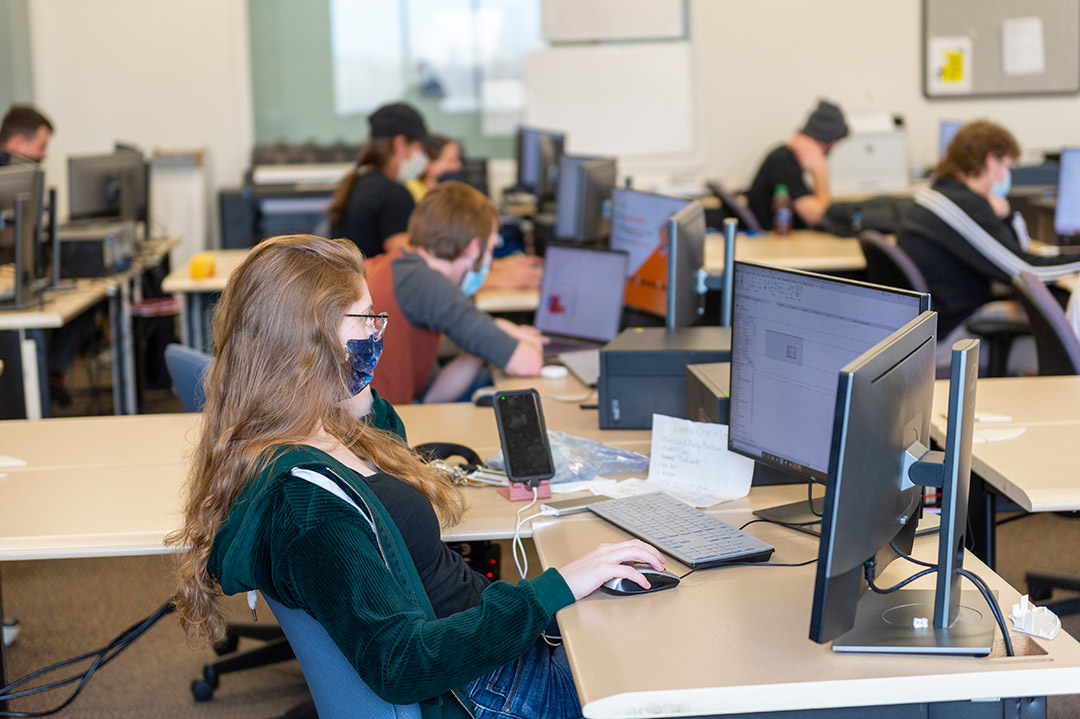Classroom experience expected to incorporate more traditional learning this fall
Classrooms at nearly full capacity; high vaccination rate among faculty, staff
Elizabeth Lamark
RIT classes begin Aug. 23 with mainly in-person sessions and near-full capacity spaces around campus.
When classes begin Aug. 23, university administrators expect students will enjoy a more traditional fall semester, albeit one with masking requirements. Most classes will be held in person and related academic activities will resume.
This comes as a welcome change from the modified student learning experiences during the height of the COVID-19 pandemic.
This fall, the goal is to have as much of an in-person experience as possible for students, according to RIT Provost and Senior Vice President for Academic Affairs Ellen Granberg. Courses that were formerly instructed as A/B splits will be mainly in person, and most spaces will operate at nearly full capacity for on-campus instruction, research, campus programs, and services.
Grading returns to letter grades from pass/fail, with the understanding that faculty and staff will work with students to maintain academic continuity if specific situations arise.
RIT’s international and graduate student populations are also expected to return to on-campus learning on Aug. 23, however, some students may still be impacted by restrictions brought about by COVID-19. Those students are encouraged to reach out to the RIT Graduate School or International Student Services.
RIT is reporting a high vaccination rate among students, faculty, and staff who have reported their status. This, in combination with precautionary masking while indoors, will allow academic activities to take on a more normal form. The university is monitoring evolving CDC guidance, particularly in light of the spread of the Delta variant, and will respond to changing campus conditions as necessary.
“I am extremely proud of the incredible work done by our faculty and staff last year,” said Granberg. “And, most of us agree that we want to get back to the culture that develops from face-to-face interactions among faculty, staff, and other students.”














